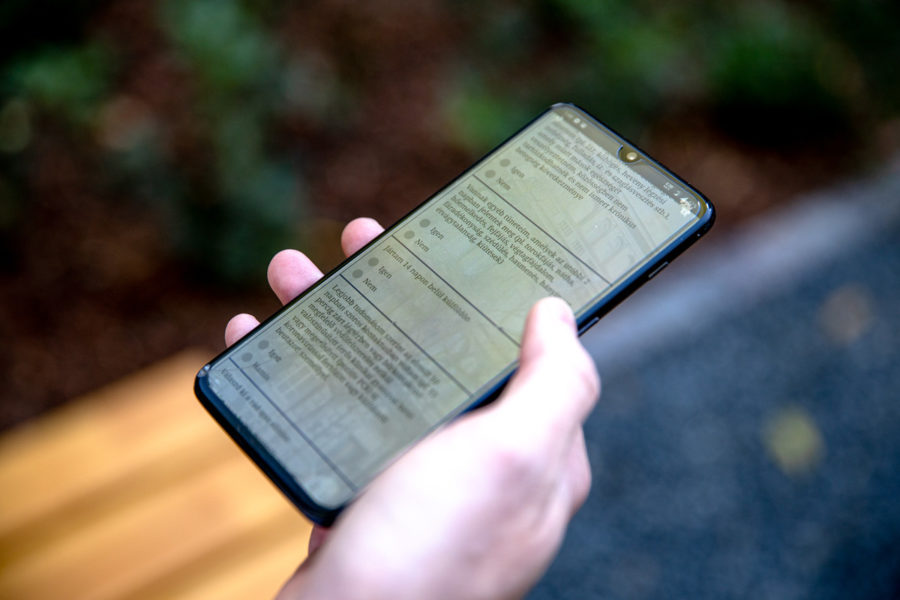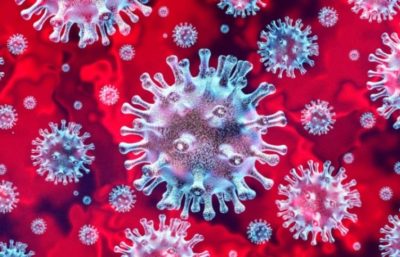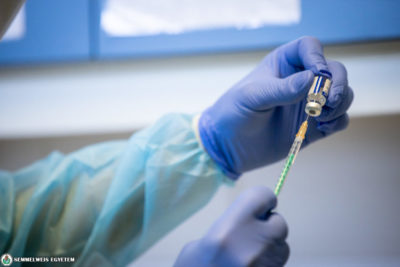Because of the current epidemiological situation, students have to go through a so-called triage, a pre-screening procedure before entering a university building. Suspected COVID-19 cases can easily be detected with the help of filling in the questionnaire and measuring the temperature. This procedure is facilitated by the online pre-triage system, which was developed by the proposal of Semmelweis University Students’ Union (SU), pretriage.semmelweis.hu. The website is available for Hungarian and international students alike: it greatly accelerates the paper-based questionnaire system, as the software immediately evaluates the answers and classifies the students into categories with respect to the degree of the risk of infection. The application of the online system has been started at several buildings and clinics of the university since Monday.
Semmelweis University Students’ Union also pays specific attention to the solution of the challenges created by the epidemic and it considers the protection of the university students’ health of utmost importance – highlighted Zsombor Papp, head of the SU Education Committee. Pre-triage is a significant part of disease prevention, during which students are only allowed to enter university buildings and clinics after having filled in a questionnaire and after having their temperature measured – said he. The system earlier operated with the filling in of paper-based questionnaires, which many times resulted in long student queues in front of the entrances. With the establishment of pretriage.semmelwies.hu page, we have managed to carry out a more rapid and more modern version of the previous system – emphasized the project initiator of the web page. He also added that the new online triage is available for international students, too.
 It is very important to assure the smooth operation of education during the current epidemiological situation as well, therefore the leadership of the Department of Education Management immediately supported this idea proposed by the students and provided help for its realization – highlighted Dr. Péter Hermann, vice-rector for educational affairs. András Szögi, IT specialist at the Department of Dentistry was appointed to carry out this online triage system. Facilitating the use as much as possible was the main aspect during the establishment of the new page. Before entering a university building, students have to log in onto pretriage.semmelweis.hu page by providing their Neptun code and birth date information, where they can quickly answer 7 questions compiled by the university based on the policies of the National Public Health Center – said Zsombor Papp.
It is very important to assure the smooth operation of education during the current epidemiological situation as well, therefore the leadership of the Department of Education Management immediately supported this idea proposed by the students and provided help for its realization – highlighted Dr. Péter Hermann, vice-rector for educational affairs. András Szögi, IT specialist at the Department of Dentistry was appointed to carry out this online triage system. Facilitating the use as much as possible was the main aspect during the establishment of the new page. Before entering a university building, students have to log in onto pretriage.semmelweis.hu page by providing their Neptun code and birth date information, where they can quickly answer 7 questions compiled by the university based on the policies of the National Public Health Center – said Zsombor Papp.
After having completed and sent the questionnaire, the software immediately evaluates the answers and classifies the students into categories indicated with colour codes with respect to the degree of the risk of infection. In case of a red colour code, the individual is classified into the category of COVID-19 suspected cases, therefore the entrance is prohibited. There is a guidance available on the web page of Semmelweis University Students’ Union for those who need help in such a case. There is an opportunity to modify the declaration or to insert a remark on the administrator’s interface by providing the Neptun code. Traceability is a great advantage of this system: it remembers the login information, thus it is enough to fill it in only once per day – emphasized Zsombor Papp.
After the feedback of the pilot version, the daily use of the online pre-triage system has become mandatory before entering any buildings at the Basic Medical Science Center, the Nagyvárad tér Theoretical Building, the Faculty of Dentistry and András Pető Faculty starting from Monday. The compulsory use of the online triage system is also in progress at the university clinics. Before entering a university building, students are required to fill in the online questionnaire and afterwards they are asked to show their cell phone screen to the person who checks the body temperature – said Zsombor Papp.
Bernadett Bódi
Photo: Attila Kovács – Semmelweis University
Translation: Katalin Illés-Romhányi


